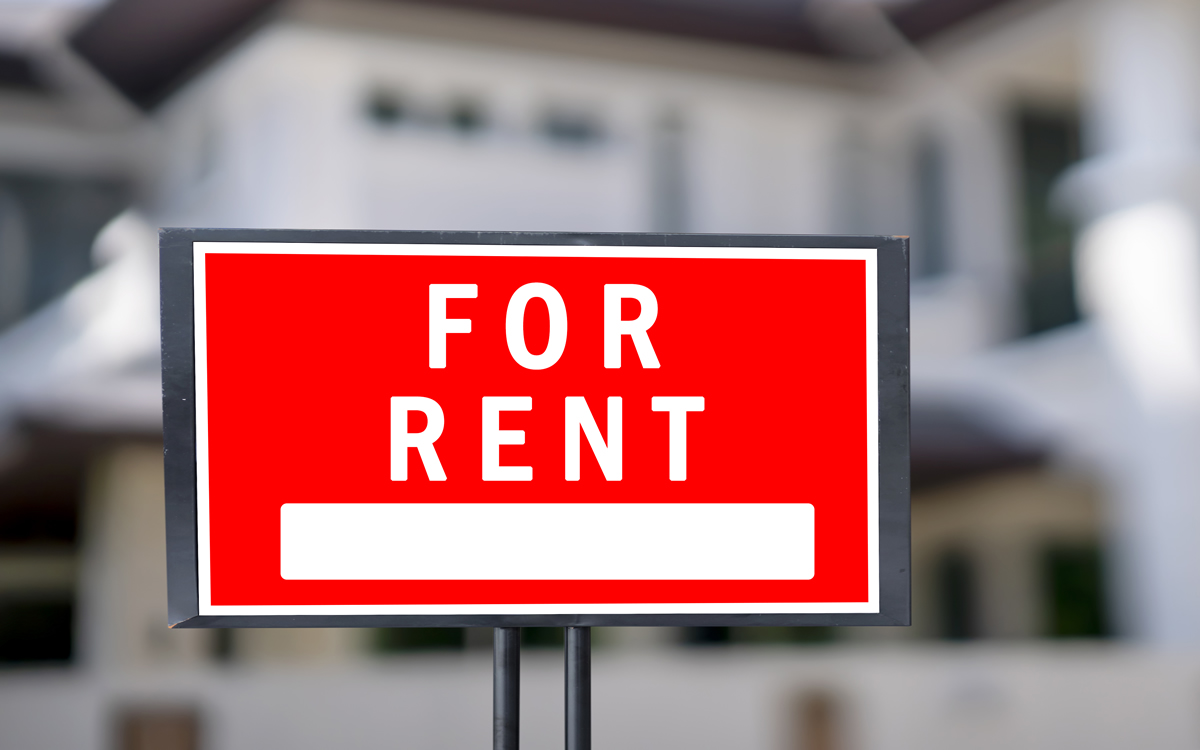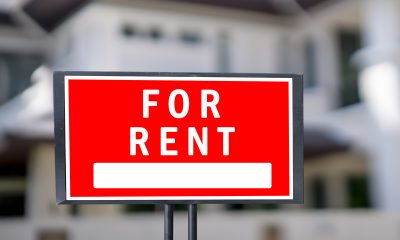Real Estate
What’s cooking: The kitchen as art
Even buyers who don’t cook want modern bells and whistles


Many buyers expect high-end kitchens — even if they don’t intend to cook in them.
Be honest. How many times have you posted a photograph of your dinner on Facebook?
Now think back to the last time – did you cook the food or did you order from a restaurant menu? And if you were the cook, did you just post the food or did you also show us where you cooked it?
While many of us just eat to live, there are those among us who see food as an art form. From the preparation of ingredients to the scent, taste and texture of the end product, food becomes an aphrodisiac and the place we prepare it an artist’s studio, where paring knives and chopping blocks replace horsehair brushes and canvas.
So when my new client, a first-time buyer, shared the list of her housing needs with me (a condo with two bedrooms, two baths, central air, hardwood floors, a wood-burning fireplace and, oh yes, a fully renovated, gourmet kitchen) I asked, “Oh, do you enjoy cooking and entertaining?”
I was expecting to hear tales of boeuf Bourguignon, salmon en croute or roast pork tenderloin accented with a purée of summer squash and sprinkled with diced shitake mushrooms that had been sautéed in Marsala wine, but instead I heard, “No. I don’t cook.”
Since I have studied the basics of design, my brain leapt immediately to the architectural principle that form follows function, i.e. that the design of a room or object should be primarily based upon its intended purpose. So when did we decide that the function of a kitchen is immaterial as long as the room is a thing of beauty?
Our mothers (and to a lesser extent, our fathers) were the chefs of our youth. For them, a kitchen could be utilitarian and still evoke warmth as family members gathered to prepare and partake of a Sunday dinner or a holiday meal.
My first memories are of our 1950s kitchen, where colors bloomed. Ours was a pink and grey version, sporting swirling Formica counters with stainless steel edges, a corner banquette and wallpaper with little coffee pots on it.
Other kitchens of that era featured expanses of yellow, green and aqua accented with black and white checkerboard linoleum floors. Greater portions of stainless steel also made their debut as cooktops, wall ovens, countertops and backsplashes.
The ‘60s ushered in pine, oak and two-toned cabinets where the frames were painted one color and the doors and drawer fronts another. In the 1970s, appliances were available in Harvest Gold, Avocado Green and Coppertone, as seen on the refrigerator in Al Bundy’s house.
In the 1980s, black, white and almond appliances joined something called a “European cabinet,” a fiberboard two-tone concoction, usually made of a cream-colored laminate and accented by horizontal strips of ersatz oak. Having lived in Europe, I can attest that there was nothing “European” about them.
It wasn’t until the 1990s that we began to see a plethora of stainless steel appliances again, but this time with a sleek, industrial look and features that might make even Wolfgang Puck scratch his head.
This trend has continued during the past 15 years as we have paired restaurant-ready appliances with a progression of oak, maple, cherry, espresso and white cabinets and long strips of wood or ceramic tile flooring. “Builder Beige” has given way to “50 Shades of Gray” on our walls and our countertops now fall like water over the edges of our kitchen islands.
These choices make it easy for an accomplished chef to work in the kitchen of his dreams, but the reality is that our busy lives often limit our use of these functional rooms to getting cubed ice from the refrigerator, making popcorn in the microwave, fetching wine from the cooler, or throwing lemons in a basket to accent the décor.
So who knows? Perhaps one day, instead of gushing over granite or fondling the faucet, a client will sing to me of easy-care laminate and hanging pot racks and we can reminisce about days gone by when chickens, not countertops, needed seasoning.
For now, however, I’ll just sit at the breakfast bar and drool over your Facebook photos. Bon appétit!
Valerie M. Blake can be reached at 202-246-8602 or at [email protected]. Each Keller Williams Realty office is independently owned and operated. Equal Housing Opportunity.

As the summer rental season ramps up, be aware that scams can affect both tenants and landlords. As a property owner looking to rent out your space, you might encounter various fraudulent schemes when advertising your property online. Understanding these scams and recognizing the red flags can save you stress and even financial loss.
Three of the most common scams that landlords face in the District of Columbia include the following:
1. Fake Payment Scams
Tenants provide fraudulent checks or money orders for rent or security deposits. These payments appear legitimate initially, but eventually bounce or are identified as fake.
Why it works: Scammers take advantage of the delay between the initial deposit and the time it takes for banks to identify fraudulent checks, allowing them to secure access to the property. Once they do, they have possession and in the District of Columbia, that means a court case to remove them.
Prevention Steps:
- Verify Funds: Wait for the check or money order to fully clear before handing over keys or signing the lease. This can take several days.
- Use Electronic Payments: Encourage tenants to use electronic payment methods like bank transfers or verified payment apps, which can be more secure and quicker to verify.
- Bank Verification: Contact the issuing bank to verify the authenticity of the payment instrument.
2. Identity Theft Scams
Prospective tenants use stolen or fake identities to pass background and credit checks. Once they secure the lease, they may engage in illegal activities or fail to pay rent.
Why it works: Scammers exploit the reliance on documentation and credit reports which, if fake, can be difficult to verify without thorough checks.
Prevention Steps:
- Thorough Screening: Conduct comprehensive background checks, including employment and previous rental history.
As a self-managing landlord, this can be both time-consuming and complicated. There are several easy ways to get caught in unlawful methods of screening based on the Districts strict tenant laws. When in doubt to get it legally right, seek out professional help, so you do not inadvertently end up violating regulations in place to protect renters.
- In-Person Meetings: Meet prospective tenants in person and request multiple forms of identification to verify their identity. Again, it’s critical to do this within the boundaries of the law. Make sure if you do it for one, do the same process, have the same questions and take the same actions for all interested parties.
- Cross-Check Information: Contact employers and previous landlords directly using publicly available contact information to confirm details provided by the tenant. Make sure you are indeed speaking to their prior or current landlord by preparing very specific questions about their lease agreement or other items a fake reference will not know or will stumble to answer.
3. Subletting Scams
Tenants illegally sublet the property to others, often at a higher rate, without the landlord’s knowledge or permission. This can lead to over-occupancy and property damage. You may also not know who is living in your unit or if they would have qualified if you had screened them. Lastly, if they have possession of your property, getting them out involves a court case.
Why it works: Scammers take advantage of landlords who do not monitor their properties closely, allowing them to profit from unauthorized subletting.
Prevention Steps:
- Find management: Ensure that preventative steps are taken, to ensure renter compliance with any sub-letting rules you’ve laid down in the original agreement.
- Regular Inspections: Conduct regular property inspections to ensure that only authorized tenants are residing in the property. Inspections in the District are tricky, a landlord cannot just enter at will or too frequently. Be sure you know the rules, or ask a professional for advice before you enter your renter-occupied property.
- Lease Clauses: Include clear clauses in the lease agreement that prohibit subletting without written permission from the landlord. Is your agreement rock solid? Or do you need professionals on your side who know what to do to ensure both you and your renters are protected fairly?
- Neighborhood Watch: Establish good communication with neighbors who can alert you to any suspicious activity or unauthorized occupants. If you used to live at that location your former neighbors and friends are the best way to keep eyes and ears out on what is going on in your property and to alert you to any unusual behaviors.
By taking these preventive measures, landlords can better protect themselves from common scams and ensure a more secure rental process.
Anatomy of a Common Rental Scam
Another prevalent scam starts when you post an advertisement for your rental property. Scammers may copy your listing, post it at a lower price, and pretend they are the landlords. Unsuspecting tenants may pay a deposit to them or even the first month’s rent to these fraudsters, believing they are securing their new home. Here’s how the scam typically unfolds:
Step 1: Scammers take the details and photos from your legitimate listing and create a fake one, often with lower rent to attract more potential tenants.
Step 2: They claim to be out of town and unable to show the property, urging potential tenants to drive by and view the property from the outside.
Step 3: They ask for a security deposit or the first month’s rent via online payment methods before the tenant has signed a lease or even seen the inside of the property.
How to Protect Yourself
Here are some steps you can take to protect yourself from these scams:
Secure Your Listing: Use reputable rental platforms and websites known for their security measures to advertise your property.
Watermark Your Photos: Adding a watermark to the images in your rental listings can prevent scammers from easily stealing your photos.
Educate Potential Tenants: Inform applicants about common scams and encourage them to be cautious of listings that seem too good to be true, ask for money up front, etc.
Meet or Video Call Potential Tenants: If possible, meet tenants in person or through a video call to verify their identity and discuss the rental terms. Requiring a matching photo ID during the application process is an added layer to ensure this is the same person.
Verify Tenant Information: Conduct a comprehensive background check, including credit, employment, rental history, and criminal records.
Red Flags for Landlords
To protect yourself and potential tenants from a scam like this, be aware of the following red flags during the tenant screening process:
- Paying All Cash Upfront: If a prospective tenant offers to pay the rent for the entire lease period in cash without a proper background check, be cautious. This can be a sign that they want to avoid detection due to illegal activities or poor credit history.
- Urgency to Move In: A tenant who is pushing to move in immediately, especially without seeing the property, should raise a red flag. They might be trying to rush the process before you notice any inconsistencies in their story or background.
- Lack of Interest in Viewing the Property: Be wary of tenants who do not ask to see the property or who are satisfied with just external views. Genuine tenants will usually want to inspect where they are going to live.
- Poor or Incomplete Documentation: If a tenant cannot provide proper identification, proof of income, or previous rental history, this is a significant warning sign. Scammers often avoid giving out personal information that can be traced back to them.
- Unusual Payment Methods: Be cautious if a tenant wants to use unconventional payment methods like wire transfers or cryptocurrency. Standard practices include checks, bank transfers, or credit card payments, which offer more security and traceability.
Organizations That Can Help
If you find yourself a victim of a rental scam, there are organizations that can offer assistance and guidance:
Federal Trade Commission (FTC): They handle complaints about deceptive and unfair business practices, including rental scams. You can file a complaint at ftc.gov.
Better Business Bureau (BBB): The BBB provides information on businesses, including complaints and scam alerts. Visit their website at bbb.org for more resources.
Internet Crime Complaint Center (IC3): This is a partnership between the FBI and the National White Collar Crime Center, and it allows victims to report internet-related criminal complaints. Visit their site at ic3.gov.
Local Law Enforcement: Contact your local police department to report the scam, especially if money has been exchanged.
By staying vigilant and informed, you can protect yourself and potential tenants from falling prey to these sophisticated scams. Remember, prevention is always better than cure, especially in the real estate market.
(Note: For examples of the three scams included, we have produced some of the content of this article using AI.)
Scott Bloom is owner and senior property manager of Columbia Property Management. For more information and resources, go to ColumbiaPM.com.

One of the most popular questions at our home buyer seminars is “What are the down payment assistance or first-time homebuyer programs available where I live?” There are various programs sponsored by multiple jurisdictions with the help of local banks, federal grants and loans as well. Knowledgeable lenders in the area will direct their eligible borrowers to these programs when a home purchase is being considered. Some of the programs are frequently mentioned in the local news: HPAP, EAHP, and DC Open Doors. There are also other options such as:
• FHLB grant for down payment assistance and/or closing costs
• Bank portfolio loans such as the Sandy Spring Bank loan, which can be 3% of the home purchase price – paired with a 97% first trust loan which is 100% financing at market rates
• Citibank Home Run
• Bank of America Down Payment Grant or Home Grant
• Chase Dream Maker Grant
• DC Open Doors – (DC Purchases only)
• HPAP/EAHP (for DC purchases only, when funds are available.)
All of these programs, grants, and loans come with guidelines and regulations, which may include income limits, household size limitations, geographic boundaries, homebuyer education classes, occupying the home as a primary residence, and funds availability. Some are easier to use and implement than others. Others may be available but can take 60 or more days to close on a home purchase, where another buyer may offer a seller a 30-day close. Some of these options may be stacked together to help build the buyer’s purchasing power.
In many cases they are worth exploring, and “seeing if the shoe fits.” A knowledgeable lender will be able to help a prospective home buyer to “try on these shoes” and see if there is a good fit. The best local Realtors and lenders will help a buyer understand which can be used at the time of purchase, and what types of documentation are necessary for each instance.
In our experience, the programs are there for those who need it, and in many cases make the difference between what a buyer has available to bring to the table, and what they need to get the “Sold” sign put out on the lawn, and the keys in their hand. Some buyers may decide to investigate these options and go without the program or the available funds anyway. Perhaps the interest rate is higher when using a program as opposed to going without it, meaning the monthly payment will be more when you use these programs. Each buyer has their own criteria of what makes a good fit for them. As with anything, “Mama said you gotta shop around.” It’s worth considering the various down payment & first time homebuyer assistance options available when looking to purchase and deciding which option(s) provide the best fit.
Don’t hesitate to reach out for more information.
Joseph Hudson is a referral agent with Metro Referrals. Reach him at [email protected] or 703-587-0597. Tina Del Casale is a mortgage banker at Sandy Spring Bank. Reach her at 301-850-1326.

The phrase “totally radical” came of age in the 1980s and was defined as cool, wonderful, or awesome. Its synonym, wicked, can be found in nearly all Ben Affleck movies and a cry of “Excellent!” will bring back memories of an adventure had by Bill (Alex Winter) and Ted (Keanu Reeves) in 1989.
Although some people are not ready for cocooning yet, homeownership is still a cornerstone of financial strength and wealth building. For LGBTQ individuals, owning a home can provide a sense of economic security and a sanctuary where they can express their personalities freely and without fear of discrimination or harassment.
Whether house, condominium, or cooperative apartment, owning a place to chill allows you to build a legacy and provide for future generations. It offers the stability needed to plan for the future, whether that involves raising a family, supporting aging parents, or ensuring a spouse’s or partner’s financial security.
Homeowners are also more likely to invest in their communities, fostering strong, inclusive, bitchin’ neighborhoods. For many LGBTQ people, a home is “In the District,” which prides itself on diversity. Homeownership allows individuals to create personal spaces that reflect their identities and values, contribute to the city’s rich cultural tapestry, support local businesses, and participate in community events and governance.
The journey toward homeownership for gay individuals has evolved over the years, reflecting broader societal changes and the struggle for LGBTQ rights. The stark contrast between the ’80s and now highlights the progress made, the challenges that still exist, and future uncertainties brought forth by the space cadets in our political system.
In the 1980s, homeownership for gay people was bogus. The decade was marked by lame, pervasive discrimination and limited legal protections. The HIV/AIDS epidemic further stigmatized the gay community, intensifying societal prejudices. This climate of fear and hostility permeated various aspects of life, including the housing market.
Gay individuals faced overt discrimination from landlords, real estate agents, and mortgage lenders, even in the rental market. It was not uncommon for same-sex couples to be denied housing simply because of their sexual orientation. Even in the late ’90s I had clients looking for homes in Prince William County, Va., who had to hightail it out of an open house when told to take a hike. I kid you not!
Financial institutions were often unwilling to grant mortgages to same-sex couples or openly gay individuals. When they did, the terms were often less favorable than those offered to heterosexual couples. This made the dream of homeownership significantly harder to achieve, even though DINKs (dual income, no kids) tended to have more household income than so-called “traditional” families.
Additionally, the lack of legal recognition for same-sex relationships posed harsh challenges. Without the ability to marry, same-sex couples faced difficulties in co-owning property and ensuring that their partner had legal rights to the home. Estate planning was complicated, as inheritance laws did not recognize same-sex partners, potentially leading to the loss of a home upon a partner’s death.
The landmark Supreme Court decision in Obergefell v. Hodges, which legalized same-sex marriage nationwide, was a fantabulous moment. This ruling provided same-sex couples with the same legal rights as heterosexual couples, including the ability to jointly own property and inherit without complication.
Anti-discrimination laws have also evolved. The definition of sex under the Federal Fair Housing Act has been expanded to include sexual orientation and gender identity, as have protected classes in Maryland and Virginia. The District has taken that a step further; our protected classes also include gender expression and personal appearance.
Organizations like the DC Center for the LGBT Community and the National Association of Gay and Lesbian Real Estate Professionals (NAGLREP) offer resources and advocacy for LGBTQ+ homebuyers. These organizations provide educational workshops, networking opportunities, and support to navigate the housing market.
The advancement of homeownership rights for gay people is a testament to the righteous resilience and determination of the LGBTQ+ community. As society continues to strive for equality, it is essential to address the remaining challenges to ensure that everyone, regardless of their sexual orientation or gender identity, can achieve the goal of homeownership.
In 2024, the only limitations on owning a home are finding one and being able to afford it. Pride weekend is a great time to go to open houses. You’ll probably be walking right by several.
But if you’re not ready yet and just feel like getting your ’80s jams on, grab your disco balls and check out the Totally Tubular Festival at The Anthem at The Wharf on July 14.I’ll be Desperately Seeking Susan and will, as they used to say in the ’70s, catch you on the flip flop.
-

 Canada2 days ago
Canada2 days agoToronto Pride parade cancelled after pro-Palestinian protesters disrupt it
-

 Theater5 days ago
Theater5 days agoStephen Mark Lukas makes sublime turn in ‘Funny Girl’
-

 Baltimore4 days ago
Baltimore4 days agoDespite record crowds, Baltimore Pride’s LGBTQ critics say organizers dropped the ball
-

 Sports4 days ago
Sports4 days agoHaters troll official Olympics Instagram for celebrating gay athlete and boyfriend












